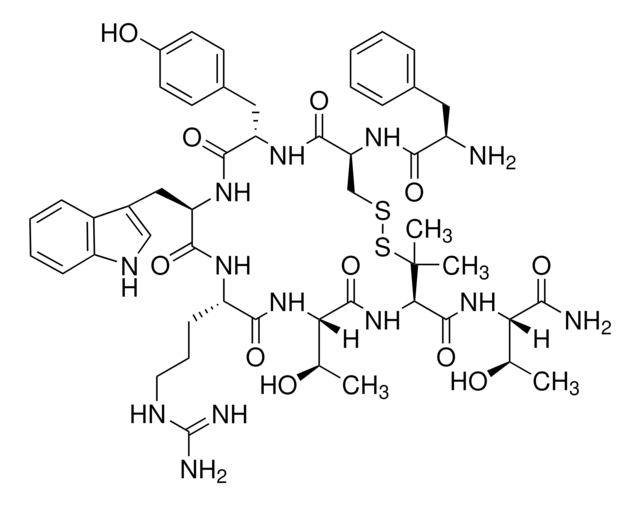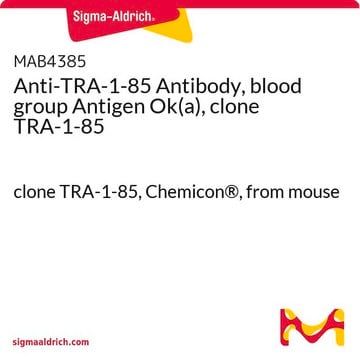MABN1871
Anti-HCN4 Antibody, clone PG2-1A4
clone PG2-1A4, from rat
Synonym(s):
Potassium/sodium hyperpolarization-activated cyclic nucleotide-gated channel 4, Brain cyclic nucleotide-gated channel 3, BCNG-3
About This Item
Recommended Products
biological source
rat
Quality Level
antibody form
purified immunoglobulin
antibody product type
primary antibodies
clone
PG2-1A4, monoclonal
species reactivity
mouse
packaging
antibody small pack of 25 μL
technique(s)
electron microscopy: suitable
immunofluorescence: suitable
immunohistochemistry: suitable
western blot: suitable
isotype
IgG2aκ
UniProt accession no.
shipped in
ambient
target post-translational modification
unmodified
Gene Information
mouse ... Hcn4(330953)
General description
Specificity
Immunogen
Application
Immunohistochemistry Analysis: A 1:100-500 dilution from a representative lot detected HCN4 in Mouse (C57BL/6) retina tissues (Courtesy of Prof. Dr. Frank Müller, Institute of Complex Systems, Cellular Biophysics (ICS-4), Forschungszentrum Jülich, Germany).
Electron Microscopy Analysis: A representative lot detected HCN4 in Electron Microscopy applications (Mataruga, A., et. al. (2007). J Comp Neurol. 502(6):1123-37).
Immunohistochemistry Analysis: A representative lot detected HCN4 in Immunohistochemistry applications (Cichy, A., et. al. (2015). J Neurosci. 35(9):4025-39; Mataruga, A., et. al. (2007). J Comp Neurol. 502(6):1123-37).
Western Blotting Analysis: A representative lot detected HCN4 in Western Blotting applications (Muller, F., et. al. (2003). Eur J Neruosci. 17(10):2084-96).
Quality
Isotyping Analysis: The identity of this monoclonal antibody is confirmed by isotyping test to be mouse IgG2a.
Target description
Physical form
Other Notes
Not finding the right product?
Try our Product Selector Tool.
Storage Class Code
12 - Non Combustible Liquids
WGK
WGK 1
Certificates of Analysis (COA)
Search for Certificates of Analysis (COA) by entering the products Lot/Batch Number. Lot and Batch Numbers can be found on a product’s label following the words ‘Lot’ or ‘Batch’.
Already Own This Product?
Find documentation for the products that you have recently purchased in the Document Library.
Our team of scientists has experience in all areas of research including Life Science, Material Science, Chemical Synthesis, Chromatography, Analytical and many others.
Contact Technical Service






